Best Space Photos of the Week – Feb. 6, 2016
Stripes, rings and shadows
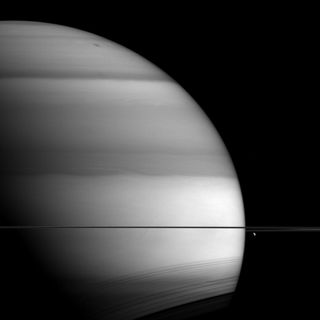
Cassini's wide-angle camera captured this image of Saturn. We can see dark and light stripes created by methane in the atmosphere. Also, the rings cast shadows across the southern pole of the planet. Read more.
A savage transition

In the southern constellation of Eridanus, Galaxy NGC 1487 floats. This galaxy consists of two or more galaxies that have collided and are merging into one, larger galaxy.
The beautiful status quo
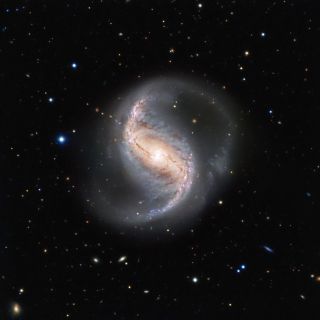
Nearly 60 million light-years away in the Fornax constellation a stunning barred spiral galaxy lives. The orientation of the image allows us to see the spiral arms and central structure with great clarity. This galaxy fits into one of the two main categories of galaxies seen in the Universe, according to experts.
SHOUT out for El Niño
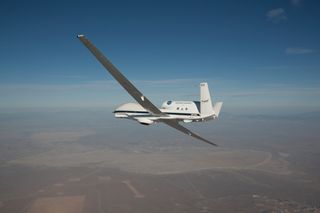
NASA's Global Hawk, a remotely piloted aircraft, will assist the NOAA in its El Niño Rapid Response Field Campaign this month. By making several flights over the Pacific Ocean the craft will gather data on El Niño-related storms.
An old young
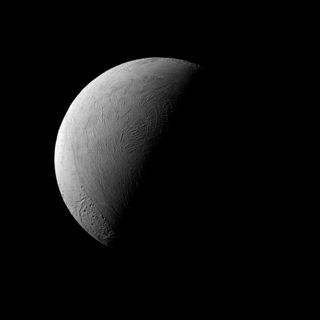
With its narrow-angle camera, Cassini snapped this image of Saturn's moon Enceladus. The image reveals the icy moon's unexpected and even brightness as well as the geologically young furrows of the rock's terrain.
Cosmonaut shot

Outside the ISS, two cosmonauts completed a spacewalk including tasks to maintain many of the experiments on the exterior of the station. They also released a ceremonial flash drive into orbit. Read more.
Curiosity selfie
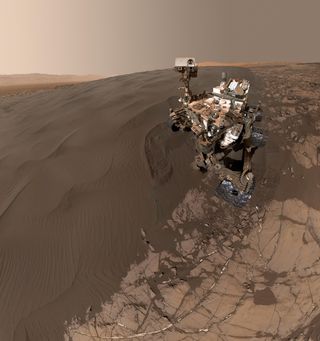
In the Namib Dune on Mars, Mars rover Curiosity took a selfie and sent it home. While exploring the dark martian sands in the Bagnold Dunes the rover is sampling the first dunes beyond Earth. Read more.
Get the Space.com Newsletter
Breaking space news, the latest updates on rocket launches, skywatching events and more!
Skywatcher sees planets
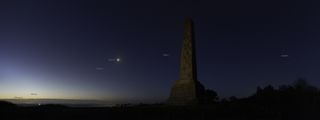
Astrophotographer Paul Andrew captured 5 planets and the moon in the night sky as seen from the White Cliffs of Dover in the southeast of the United Kingdom on Feb. 3, 2016. Learn how and when to see the planets.
Atlas V launch
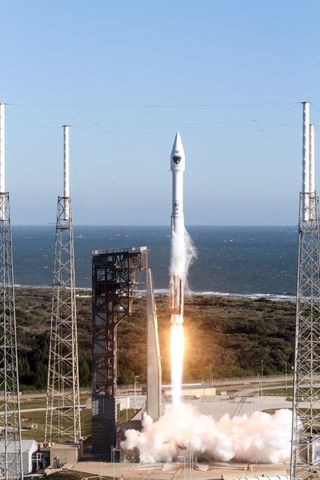
The last of a constellation of GPS satellites went into space, joining 29 other navigational satellites. These satellites provide global positioning, navigation and timing data to civilian and military entities. Read more.
Hills of water ice on Pluto
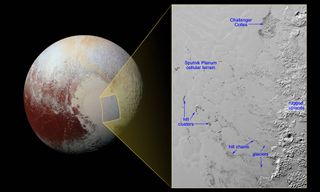
Water-ice mini-mountains glide slowly across Pluto's surface, possibly transported by nitrogen-ice glaciers. The New Horizon's spacecraft image indicates the now famous "heart" is littered with groups of these water-ice hills. Read more.
China’s 5 T-1
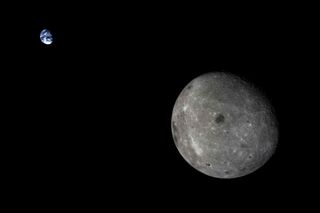
China's Change'e 5-T1 brought home a rarely seen view of home — our blue marble is small as seen from the other side of the Moon. Download the wallpaper.
Join our Space Forums to keep talking space on the latest missions, night sky and more! And if you have a news tip, correction or comment, let us know at: community@space.com.

Space.com is the premier source of space exploration, innovation and astronomy news, chronicling (and celebrating) humanity's ongoing expansion across the final frontier. Originally founded in 1999, Space.com is, and always has been, the passion of writers and editors who are space fans and also trained journalists. Our current news team consists of Editor-in-Chief Tariq Malik; Editor Hanneke Weitering, Senior Space Writer Mike Wall; Senior Writer Meghan Bartels; Senior Writer Chelsea Gohd, Senior Writer Tereza Pultarova and Staff Writer Alexander Cox, focusing on e-commerce. Senior Producer Steve Spaleta oversees our space videos, with Diana Whitcroft as our Social Media Editor.











